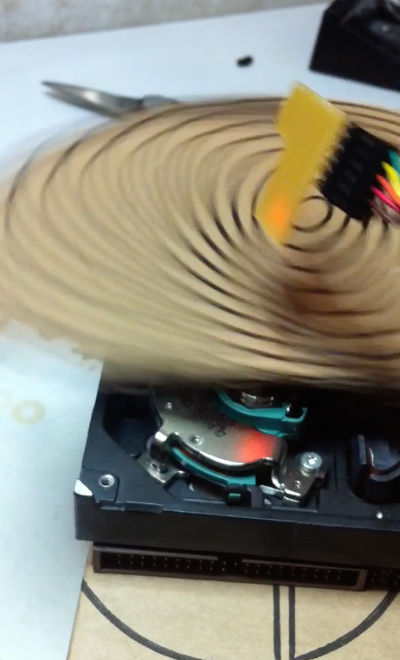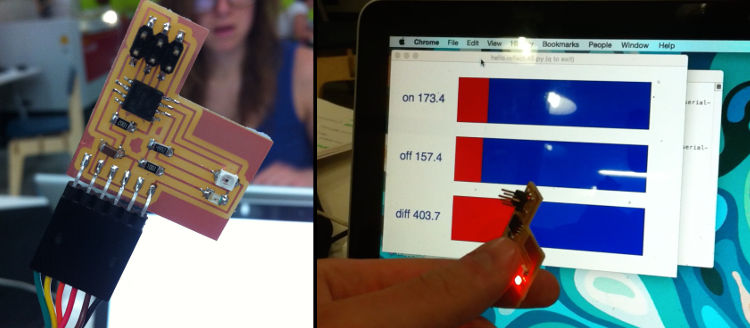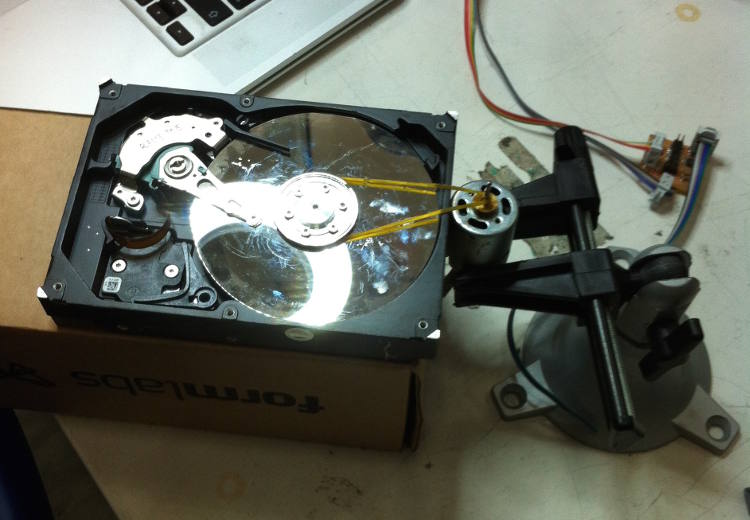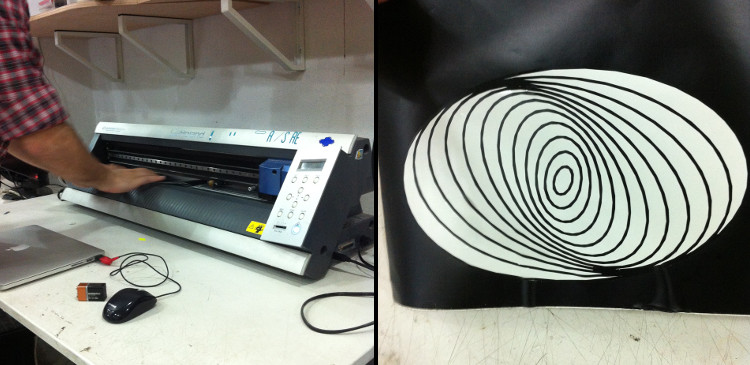Mapping through Sound; or, the Beginning of DJ Funky Fab
To begin with, I have to admit that I might have got off subject a bit this week. There is a project that I had wanted to pursue for quite a while now, and I might have slightly shoved it down the throat of this week’s assignment.
Few months ago, I assisted to a lecture by interactive designer Camille Scherrer and, among other projects, she presented her turning plates – a revamped turntable for plates translating their design into minimalist soundtracks. This project doesn’t really need any ameliorations in its own, but I had been tempted to make a new iteration of it for quite a while – using different materials and codes, yet still evoking the turntable aesthetics.
I therefore started off by designing, milling and soldering what seemed to me as the most appropriate input device for this end – the synchronous detection board. I retained the original design, but changed the form of the board to give it a more ‘headshell’-like form (files here). After having tested it with Neil’s code, I opened Processing 3 and tried to program the appropriate script. The workflow went quite well, despite my very limited experience with this software – as with the other programming-related weeks, I simply tried to find various scripts showcasing desired behaviors, and ‘puzzled’ them together into what I want. In the end, the trickiest part was to figure out the serial communication part of the script – luckily, Ferdi shared with us a script using serial communication from one of his students from last year, Tiago Figueiredo, and I could then easily adapt it to my script. In the end, my script can translate an input into musical cues, use the keyboard as a synthesizer and visually represent the musical variations that it stages (file here).
Noise is Only Noise You Can't See from Theo L. Richer on Vimeo.
From there, I diverted a bit from the ‘interface’ part of the project, and started working on the physical aspect of the piece. Using an old hard drive, my DC motor board from last week and a rubber band (very high tech), I could build a Fab-looking (or dystopia-looking, it depends on who is talking) turntable, on which I glued an elliptic design that I had cut with the vinyl cutter. The final result might indeed look like some pile of trash, but the sensor indeed picks up the turning board’s variations and seems to follow a certain rhythm. I could indeed ameliorate the sensibility of the board and refine the code’s design, but, for this week, I am quite satisfied with this very early prototype of this project I would love to go back to at some point.
If You Can Fab It, You Can Spin It from Theo L. Richer on Vimeo.
DJ Funky Fab from Theo L. Richer on Vimeo.
See below for all the details/for each step.

- Week: 14
- Subject: Interface and Application Programming
- Tools: EAGLE, Modela, Processing, Vinyl Cutter
- Objective: Write an application that interfaces with an input and/or output device
- Files: Click here


